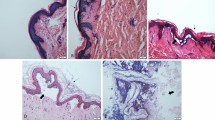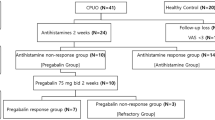Abstract
Electrophorus electricus, or Gymnotus electricus, is a teleost of the family of Gymnotidæ, popularly known as the electric eel, and lives in the shallow waters of the South American equatorial rivers. It is the most powerful fresh-water electric fish ; mature specimens can discharge trains of pulses of more than 600 V and 1 amp1,2.
This is a preview of subscription content, access via your institution
Access options
Subscribe to this journal
Receive 51 print issues and online access
$199.00 per year
only $3.90 per issue
Buy this article
- Purchase on Springer Link
- Instant access to full article PDF
Prices may be subject to local taxes which are calculated during checkout
Similar content being viewed by others
References
Grundfest, H., in Progress in Biophysics and Biophysical Chemistry, 7 (Pergamon press, New York, 1957)
Keynes, R. D., in The Physiology of Fishes, by Brown, M. E. (Academic Press, New York, 1956).
Herald, S. E., Living Fishes of the World (Doubleday and Co., Inc., Garden City, New York, 1961).
Author information
Authors and Affiliations
Rights and permissions
About this article
Cite this article
AGALIDES, E., BERNARDINI, J. A Cure for the Ulcer-like Skin Disease of the Electric Eel. Nature 201, 102–103 (1964). https://doi.org/10.1038/201102a0
Issue Date:
DOI: https://doi.org/10.1038/201102a0
Comments
By submitting a comment you agree to abide by our Terms and Community Guidelines. If you find something abusive or that does not comply with our terms or guidelines please flag it as inappropriate.



